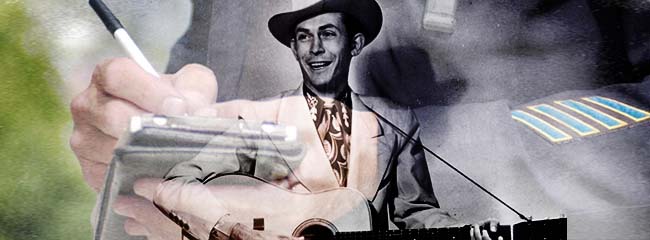That’s the title of Hank William’s 1947 hit (https://www.youtube.com/watch?v=VBAGF8Zevl8). It is also my nickname for NY’s Vehicle & Traffic Law (VTL) § 1144-a. It’s real name is the “Ambrose-Searles Move Over Act.” It governs how you are supposed to operate your vehicle when approaching a parked, stopped or standing emergency or hazard vehicle on a highway.
Hank died at age 29 from too much hard living (alcohol/drug induced heart attack). Trooper Ambrose and Deputy Searles died from bad driving. They, and many other officers in NY and around the country, were struck by passing cars during traffic stops. In response to those tragedies, NY put VTL § 1144-a in force on January 1, 2011.
If you are driving on a highway with multiple lanes going in one direction, you are required to change lanes to move away from the any emergency/hazard vehicle stopped on the side of the road with it’s emergency lights activated if you can do so safely. For full text of VTL §1144-a: http://www.safeny.ny.gov/rowa-vt.htm#1144-a
The last sentence of the statute is key. You don’t have to move over if by doing so you violate other traffic laws, including VTL §1110 (“Obedience to ….traffic control devices”) and VTL §1128 (“Driving on roadways laned for traffic”). I have never seen §1110 be an issue, but §1128 (a) often is. That is the statute which forbids you from changing lanes unless your “movement can be made with safety.” http://codes.lp.findlaw.com/nycode/VAT/VII/25/1128
The law does not require you to live a life of danger, to take a chance with every move you make (https://www.youtube.com/watch?v=6iaR3WO71j4), or to create a risk for others. If there is no safe opportunity to move out of your lane, DON’T. The officer’s safety is important, but the law doesn’t expect drivers to create hazards.
A point of contention arises when the officer disagrees with your judgment. You didn’t move over, but she thought you should have. The person sitting behind the wheel is often in the best position to assess the risks of changing lanes, the speed & position of other cars, and the spacial relationships involved. The officer standing on the roadway may not have the best vantage point. You are behind your wheel. It is your job to get home alive and not endanger others on the highway. It is your call.
If the officer’s opinion conflicts with your perception, the ticket will probably be issued. The conflict in viewpoints will be resolved in court, or, more likely, thru plea negotiations via the mail between your attorney (hopefully me) and the Assistant D.A.
A conviction for violating § 1144-a carries 3 points, a maximum fine of $275, a surcharge of either $88 or $93, and up to 15 days in jail. In my experience, jail usually isn’t a worry unless there is an injury or other extenuating circumstance.
If you can’t move over safely, slow down as much as you can. Put your flashers on and create distance between your vehicle and the officer by being as far over in your lane as possible without trespassing into the next lane. Be prepared to be ticketed if this is your only recourse. Don’t argue with the officer. If he has decided to pull you over for not changing lanes, you won’t change his mind. And, anything you say can be misconstrued, misquoted and used against you.
This law is more than 4 years old, but I still have clients telling me they weren’t aware of it’s existence. DMV rarely does a decent job of announcing new laws or educating drivers. But the police are very aware of this law. Enforcement has been zealous.
Points on your license matter. Keeping your license, maintaining a good record for insurance ratings, and avoiding DMV administrative fees should all be considered. My office is here to assist you in keeping your record as clean as possible. Safe driving.
And for some traveling music, a more rowdy version than Hank’s… https://www.youtube.com/watch?v=lAcUcPzw2Jw


A lively call to action, encouraging change or progress with a sense of urgency and enthusiasm. masonry contractors boston ma
Reply